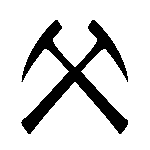Preface
- Page ID
- 132020
\( \newcommand{\vecs}[1]{\overset { \scriptstyle \rightharpoonup} {\mathbf{#1}} } \)
\( \newcommand{\vecd}[1]{\overset{-\!-\!\rightharpoonup}{\vphantom{a}\smash {#1}}} \)
\( \newcommand{\dsum}{\displaystyle\sum\limits} \)
\( \newcommand{\dint}{\displaystyle\int\limits} \)
\( \newcommand{\dlim}{\displaystyle\lim\limits} \)
\( \newcommand{\id}{\mathrm{id}}\) \( \newcommand{\Span}{\mathrm{span}}\)
( \newcommand{\kernel}{\mathrm{null}\,}\) \( \newcommand{\range}{\mathrm{range}\,}\)
\( \newcommand{\RealPart}{\mathrm{Re}}\) \( \newcommand{\ImaginaryPart}{\mathrm{Im}}\)
\( \newcommand{\Argument}{\mathrm{Arg}}\) \( \newcommand{\norm}[1]{\| #1 \|}\)
\( \newcommand{\inner}[2]{\langle #1, #2 \rangle}\)
\( \newcommand{\Span}{\mathrm{span}}\)
\( \newcommand{\id}{\mathrm{id}}\)
\( \newcommand{\Span}{\mathrm{span}}\)
\( \newcommand{\kernel}{\mathrm{null}\,}\)
\( \newcommand{\range}{\mathrm{range}\,}\)
\( \newcommand{\RealPart}{\mathrm{Re}}\)
\( \newcommand{\ImaginaryPart}{\mathrm{Im}}\)
\( \newcommand{\Argument}{\mathrm{Arg}}\)
\( \newcommand{\norm}[1]{\| #1 \|}\)
\( \newcommand{\inner}[2]{\langle #1, #2 \rangle}\)
\( \newcommand{\Span}{\mathrm{span}}\) \( \newcommand{\AA}{\unicode[.8,0]{x212B}}\)
\( \newcommand{\vectorA}[1]{\vec{#1}} % arrow\)
\( \newcommand{\vectorAt}[1]{\vec{\text{#1}}} % arrow\)
\( \newcommand{\vectorB}[1]{\overset { \scriptstyle \rightharpoonup} {\mathbf{#1}} } \)
\( \newcommand{\vectorC}[1]{\textbf{#1}} \)
\( \newcommand{\vectorD}[1]{\overrightarrow{#1}} \)
\( \newcommand{\vectorDt}[1]{\overrightarrow{\text{#1}}} \)
\( \newcommand{\vectE}[1]{\overset{-\!-\!\rightharpoonup}{\vphantom{a}\smash{\mathbf {#1}}}} \)
\( \newcommand{\vecs}[1]{\overset { \scriptstyle \rightharpoonup} {\mathbf{#1}} } \)
\( \newcommand{\vecd}[1]{\overset{-\!-\!\rightharpoonup}{\vphantom{a}\smash {#1}}} \)
\(\newcommand{\avec}{\mathbf a}\) \(\newcommand{\bvec}{\mathbf b}\) \(\newcommand{\cvec}{\mathbf c}\) \(\newcommand{\dvec}{\mathbf d}\) \(\newcommand{\dtil}{\widetilde{\mathbf d}}\) \(\newcommand{\evec}{\mathbf e}\) \(\newcommand{\fvec}{\mathbf f}\) \(\newcommand{\nvec}{\mathbf n}\) \(\newcommand{\pvec}{\mathbf p}\) \(\newcommand{\qvec}{\mathbf q}\) \(\newcommand{\svec}{\mathbf s}\) \(\newcommand{\tvec}{\mathbf t}\) \(\newcommand{\uvec}{\mathbf u}\) \(\newcommand{\vvec}{\mathbf v}\) \(\newcommand{\wvec}{\mathbf w}\) \(\newcommand{\xvec}{\mathbf x}\) \(\newcommand{\yvec}{\mathbf y}\) \(\newcommand{\zvec}{\mathbf z}\) \(\newcommand{\rvec}{\mathbf r}\) \(\newcommand{\mvec}{\mathbf m}\) \(\newcommand{\zerovec}{\mathbf 0}\) \(\newcommand{\onevec}{\mathbf 1}\) \(\newcommand{\real}{\mathbb R}\) \(\newcommand{\twovec}[2]{\left[\begin{array}{r}#1 \\ #2 \end{array}\right]}\) \(\newcommand{\ctwovec}[2]{\left[\begin{array}{c}#1 \\ #2 \end{array}\right]}\) \(\newcommand{\threevec}[3]{\left[\begin{array}{r}#1 \\ #2 \\ #3 \end{array}\right]}\) \(\newcommand{\cthreevec}[3]{\left[\begin{array}{c}#1 \\ #2 \\ #3 \end{array}\right]}\) \(\newcommand{\fourvec}[4]{\left[\begin{array}{r}#1 \\ #2 \\ #3 \\ #4 \end{array}\right]}\) \(\newcommand{\cfourvec}[4]{\left[\begin{array}{c}#1 \\ #2 \\ #3 \\ #4 \end{array}\right]}\) \(\newcommand{\fivevec}[5]{\left[\begin{array}{r}#1 \\ #2 \\ #3 \\ #4 \\ #5 \\ \end{array}\right]}\) \(\newcommand{\cfivevec}[5]{\left[\begin{array}{c}#1 \\ #2 \\ #3 \\ #4 \\ #5 \\ \end{array}\right]}\) \(\newcommand{\mattwo}[4]{\left[\begin{array}{rr}#1 \amp #2 \\ #3 \amp #4 \\ \end{array}\right]}\) \(\newcommand{\laspan}[1]{\text{Span}\{#1\}}\) \(\newcommand{\bcal}{\cal B}\) \(\newcommand{\ccal}{\cal C}\) \(\newcommand{\scal}{\cal S}\) \(\newcommand{\wcal}{\cal W}\) \(\newcommand{\ecal}{\cal E}\) \(\newcommand{\coords}[2]{\left\{#1\right\}_{#2}}\) \(\newcommand{\gray}[1]{\color{gray}{#1}}\) \(\newcommand{\lgray}[1]{\color{lightgray}{#1}}\) \(\newcommand{\rank}{\operatorname{rank}}\) \(\newcommand{\row}{\text{Row}}\) \(\newcommand{\col}{\text{Col}}\) \(\renewcommand{\row}{\text{Row}}\) \(\newcommand{\nul}{\text{Nul}}\) \(\newcommand{\var}{\text{Var}}\) \(\newcommand{\corr}{\text{corr}}\) \(\newcommand{\len}[1]{\left|#1\right|}\) \(\newcommand{\bbar}{\overline{\bvec}}\) \(\newcommand{\bhat}{\widehat{\bvec}}\) \(\newcommand{\bperp}{\bvec^\perp}\) \(\newcommand{\xhat}{\widehat{\xvec}}\) \(\newcommand{\vhat}{\widehat{\vvec}}\) \(\newcommand{\uhat}{\widehat{\uvec}}\) \(\newcommand{\what}{\widehat{\wvec}}\) \(\newcommand{\Sighat}{\widehat{\Sigma}}\) \(\newcommand{\lt}{<}\) \(\newcommand{\gt}{>}\) \(\newcommand{\amp}{&}\) \(\definecolor{fillinmathshade}{gray}{0.9}\)This book aims to increase the ability of earth scientists to understand and use microbiology. Earth scientists work on many of the most pressing issues of our time, including work related to climate change, energy resources, and water. Microorganisms play major roles in these areas, and yet many earth scientists have little exposure to microbiology within their undergraduate training. That was certainly the case for me upon completing a BS in Geological Sciences, and that has also been the case for many of the students who I have taught since becoming a professor. This book can help earth science students and professionals get started with microbiology and show them its vast importance to their area of expertise.
The bias of this book is based on my own experiences and interests. I use many examples from my own research throughout the book. This choice is not because I think my research is superior to other examples, but rather because it is generally a convenient choice for me. Throughout the book, I also emphasize geochemistry. In that regard, microorganisms are largely described based on their function (e.g., sulfate reducers) rather than their taxonomy. Moreover, the book describes some geochemical calculations in detail but only gives a very brief example of how microbial communities are analyzed using molecular techniques. This choice reflects my strengths as a researcher, but it is also a convenient pathway into microbiology for earth scientists, who are generally familiar with geochemistry but not molecular biology.
Most of the topics included in this book are not extensively reviewed. This book is not intended to be a collection of thorough review articles. We bury key messages in the noise when we flood our students with too much information. Instead, for most topics, the book seeks to define key relationships and provide a few concrete examples that can help illustrate those relationships. In short, the idea is to get readers started with microbiology, not to try to tell them everything that is known.
My formal training in microbiology has been modest. I have mostly learned about microorganisms through my research, students, collaborators, and mentors. In that regard, I owe a debt of gratitude to many scientists. As a MS student at the University of Illinois, Craig Bethke and Rob Sanford helped launch my career as a scientist and spark my interest in the world of aquifer microbiology. I also met Qusheng Jin at Illinois, who has been a friend and mentor ever since. As a PhD student at the University of New Mexico, Laura Crossey, Eric Roden, Cristina Takacs-Vesbach, Adrian Brearley, and Cliff Dahm generously helped me integrate microbiology and geochemistry and expand my ability to analyze microbial communities and environmental samples. As a postdoc, I benefited from mentoring by Anna Martini at Amherst College and Susan Altman and Randy Cygan at Sandia National Laboratories.
Since joining Kansas State University, many collaborators have continued my education in biogeochemistry and microbiology, including but not limited to Sharon Billings, Andrea Brookfield, Amy Burgin, Walter Dodds, Ganga Hettiarachchi, Ari Jumpponen, Terry Loecke, Gwen Macpherson, Jesse Nippert, Janet Paper, Prathap Parameswaran, Marcos Sarto, Ben Sikes, Pam Sullivan, Sara Vero, and Lydia Zeglin. I am also grateful for the funding that has made my research and collaborations possible, including support from my home department, the Kansas NSF EPSCoR program, NSF LTER, ACS PRF, and the NSF Geobiology and Low-Temperature Geochemistry program.
In addition to these scientists and funding institutions, I owe a special thanks to the Kansas State University Open/Alternative textbook initiative and in particular, K-State Librarians Gwendolyn Sibley and Carolyn Jackson. The support of this program helped encouraged me to write this book and the efforts of Gwendolyn and Carolyn were instrumental in helping me push it over the finish line.
Finally, it is important to note that most of the contents of this edition of the book have not undergone any peer review. However, I am grateful for generous input from Ben Walters, who read early versions of some chapters while taking my Geomicrobiology course. I am also grateful for valuable input from Qusheng Jin, Karin Goldberg, and Maarten de Moor.


